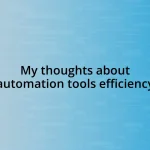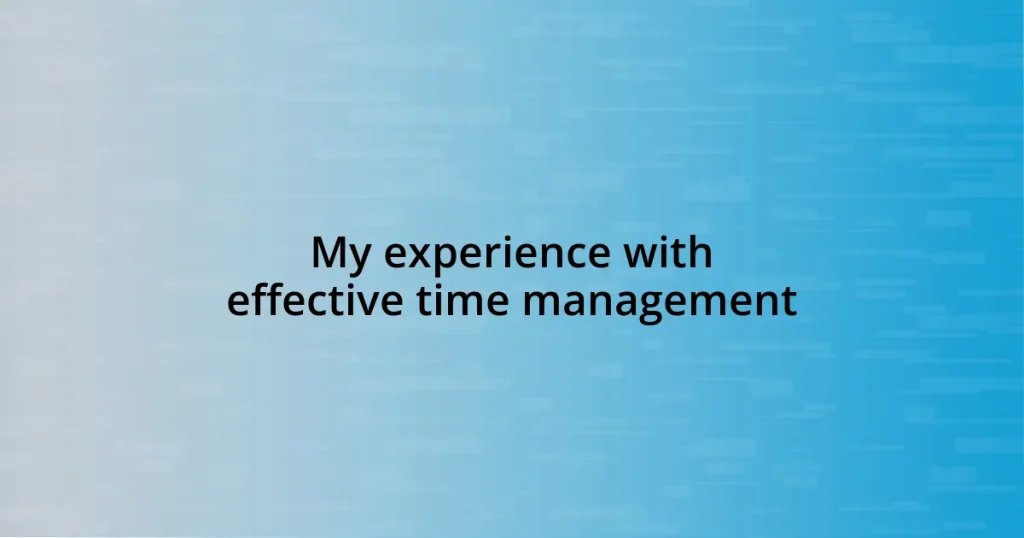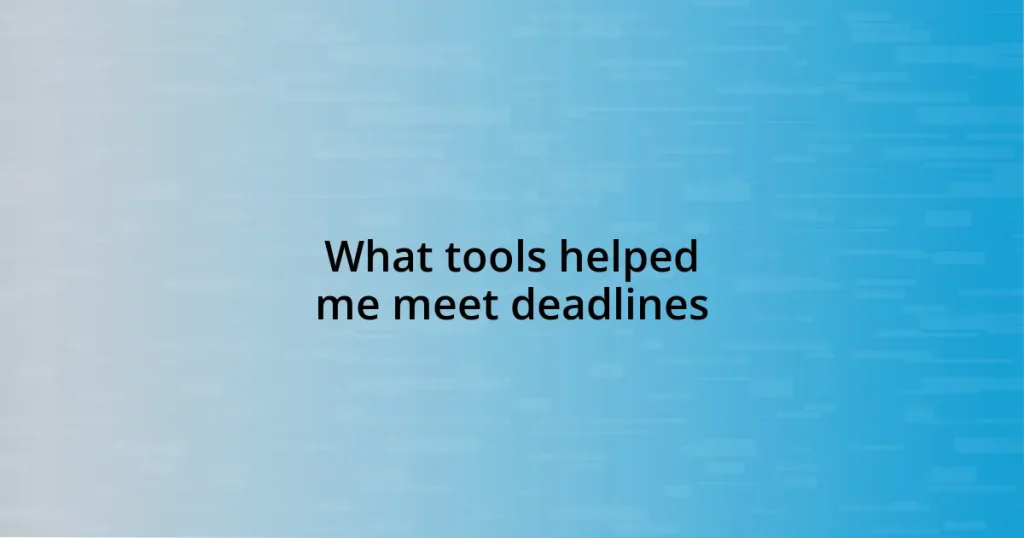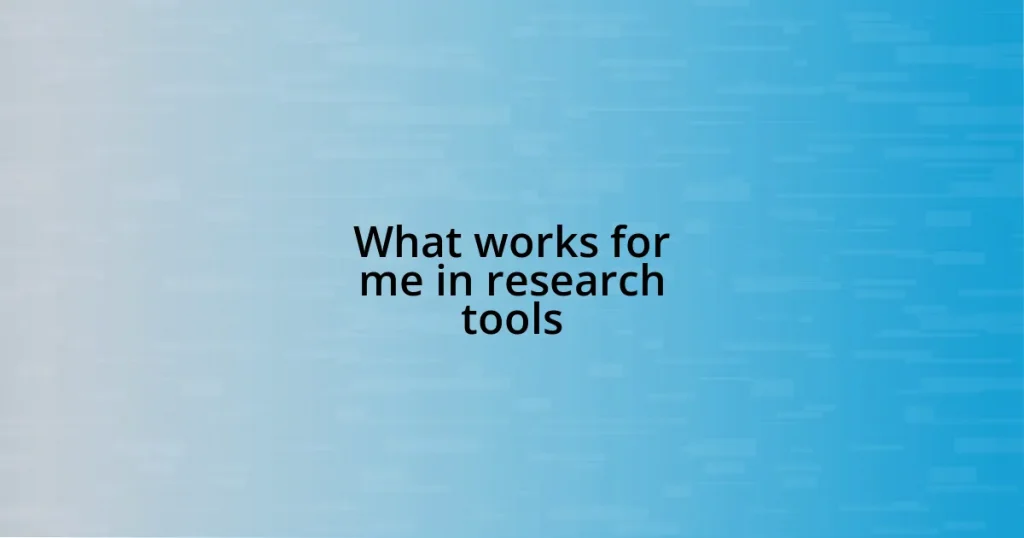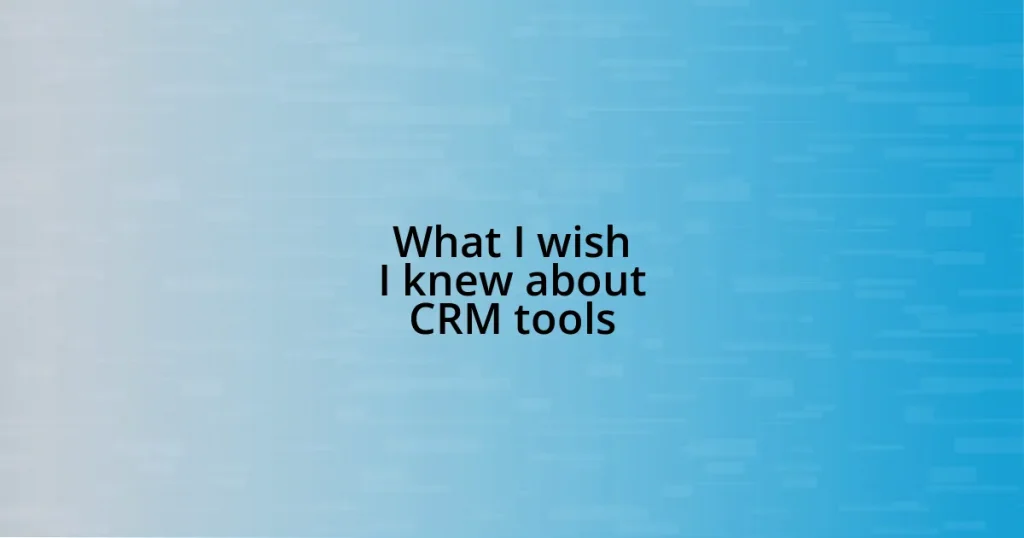Key takeaways:
- The Pomodoro Technique enhances focus and productivity by using timed work intervals with breaks.
- Identifying personal time wasters such as social media and overcommitting allows for better prioritization and stress reduction.
- Setting SMART goals provides clarity and accountability, transforming vague aspirations into actionable plans.
- Regularly reviewing and adjusting schedules helps adapt to unforeseen challenges and optimizes productivity patterns.
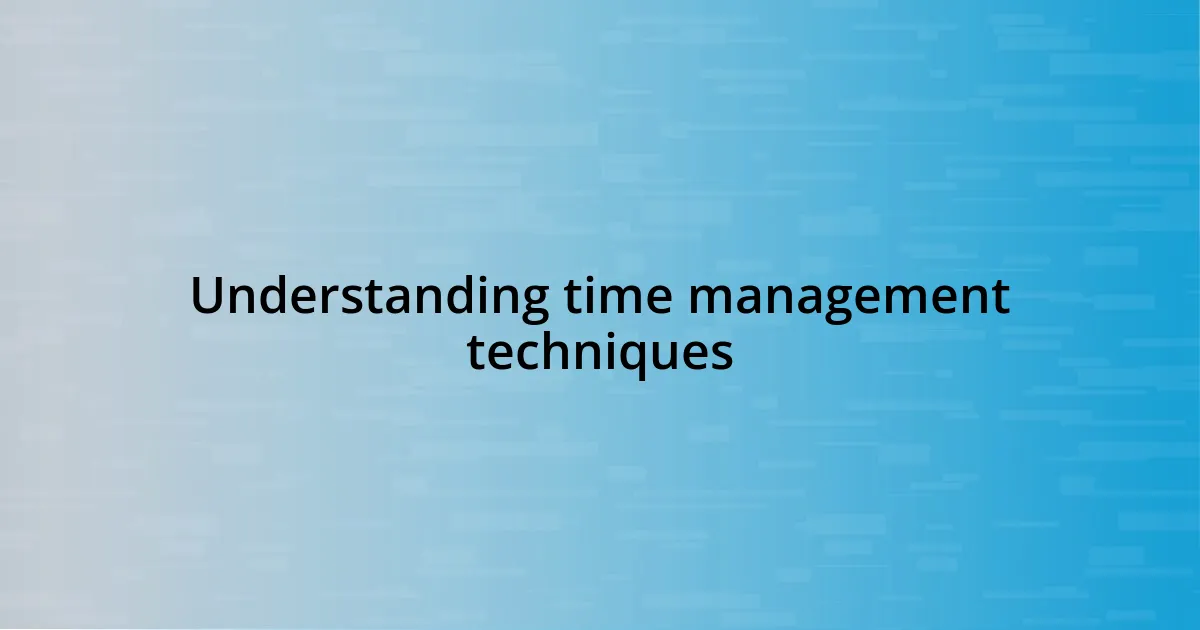
Understanding time management techniques
Understanding various time management techniques has been a game changer for me. One approach that truly resonated with me is the Pomodoro Technique, which involves breaking work into intervals, traditionally 25 minutes, with short breaks in between. I remember the first time I tried it; I was amazed at how focused I could be with a timer ticking away—it’s almost like turning productivity into a little challenge.
Another technique that I’ve found incredibly useful is priority mapping using the Eisenhower Matrix. This method helps distinguish between what’s urgent and what’s important. I recall a time when I was overwhelmed with tasks; drawing this matrix allowed me to see that some of my so-called ‘urgent’ tasks really weren’t that important, leading to a significant reduction in stress. Have you ever felt like you’re busy but not productive? This technique can help clarify that.
Lastly, daily and weekly planning sessions have become essential for me. I used to jump into my day without a plan, which often left me feeling scattered. One night, I decided to take 15 minutes to outline my goals for the next day. That simple act turned chaotic mornings into focused, purposeful days. Isn’t it fascinating how just a little bit of planning can transform your approach to time?
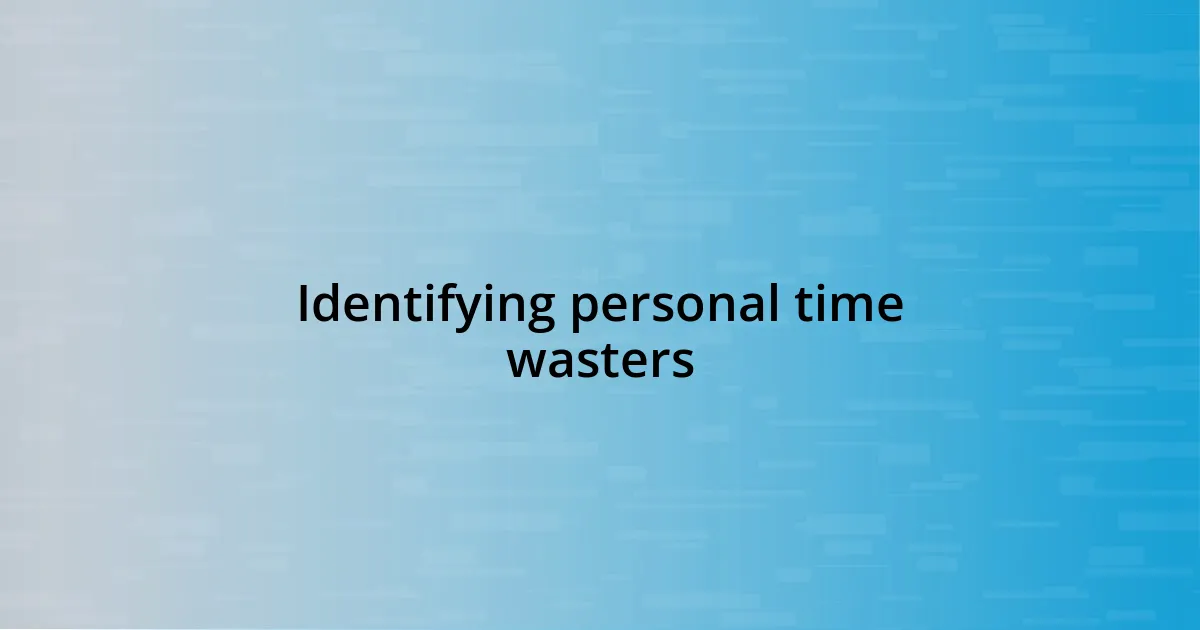
Identifying personal time wasters
Identifying personal time wasters is crucial for enhancing productivity. In my journey, I realized that social media was a significant culprit. During one particularly distracted afternoon, I found myself scrolling through my feeds for over an hour without even realizing it. It was a wake-up call; I decided to set strict time limits for usage. The clarity that came from this simple change was eye-opening.
Another unexpected time-waster I noticed was my tendency to say “yes” to every request. There was one instance where I took on three additional projects, thinking I could manage them. Instead, my stress levels shot up, and I barely completed my own work. Now, I consciously evaluate my commitments before agreeing to avoid spreading myself too thin. Do you often find yourself overcommitting? Understanding this about myself helped me prioritize what truly matters.
Lastly, I’ve found that unorganized environments can lead to significant distractions. I once spent an entire morning looking for important documents while my deadlines loomed over me. Since that experience, I’ve made decluttering my workspace a routine task. It’s incredible how a clean, organized environment can boost concentration and motivation. How often do you take time to tidy up your workspace? I believe it really can make a difference.
| Time Waster | Strategy to Combat |
|---|---|
| Social Media | Set strict usage limits |
| Overcommitting | Evaluate commitments before saying yes |
| Unorganized Workspace | Establish a regular decluttering routine |
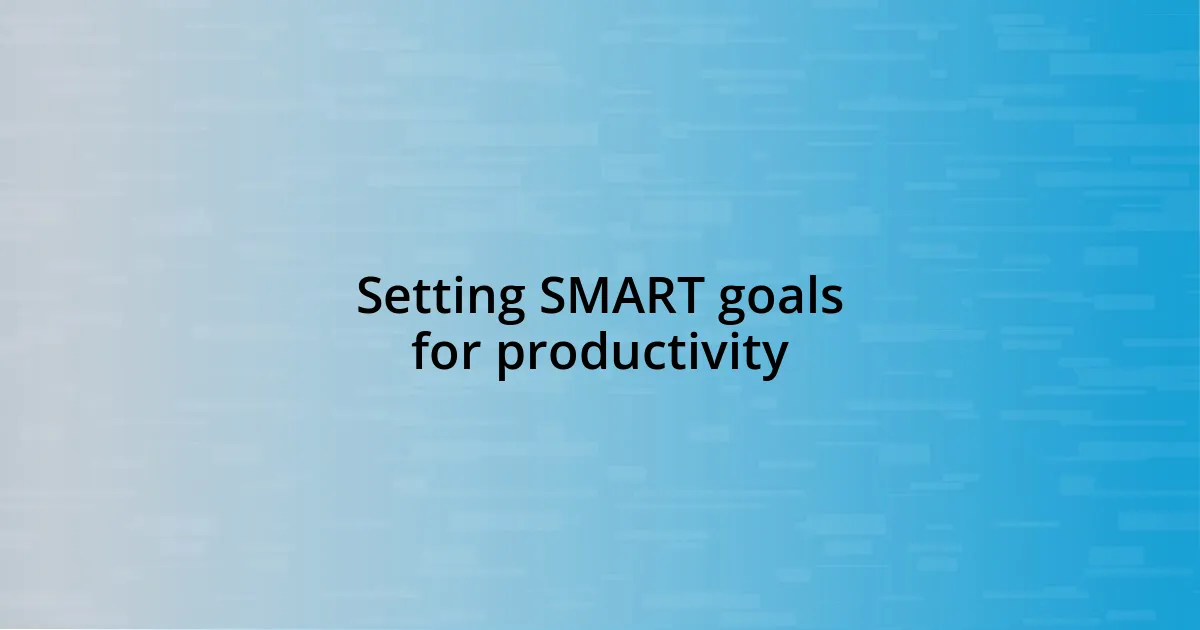
Setting SMART goals for productivity
Setting SMART goals has been an essential part of my productivity journey. By focusing on Specific, Measurable, Achievable, Relevant, and Time-bound goals, I found that I could channel my energy in a much more effective way. For instance, when I wanted to improve my writing skills, rather than saying “I want to write more,” I set a goal to write 500 words every weekday by 5 PM. This clarity pushed me to make writing a non-negotiable part of my day.
- Specific: Define exactly what you want to accomplish.
- Measurable: Set benchmarks to track your progress.
- Achievable: Ensure your goal is realistic given your resources.
- Relevant: Align your goals with broader objectives.
- Time-bound: Set a deadline to create urgency and focus.
I’ve learned that setting these parameters creates a sense of accountability. A moment that stands out to me is when I also applied this to my fitness routine. Instead of just wanting to get fit, I committed to attending yoga classes three times a week for the next month. Not only did it motivate me, but having that timeline kept me engaged. Watching my progress unfold was both gratifying and energizing, proving that when goals are well-defined, they can transform aspirations into tangible results.
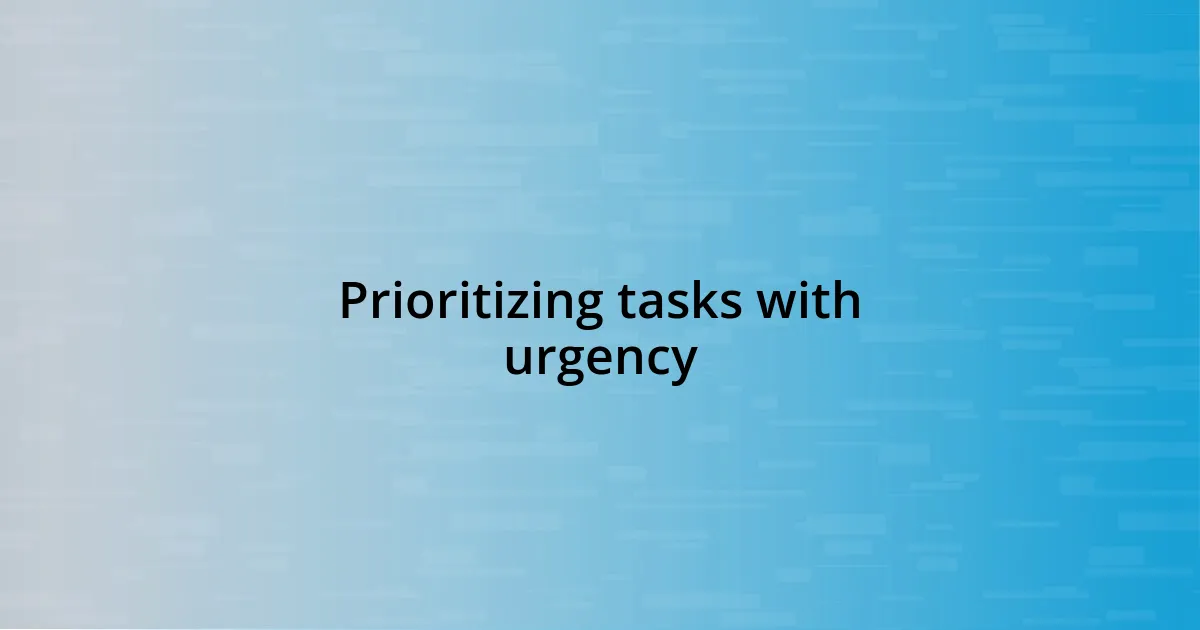
Prioritizing tasks with urgency
When it comes to prioritizing tasks with urgency, I’ve discovered that a simple yet powerful technique is to assess deadlines critically. For instance, during my recent project, I faced multiple overlapping deadlines. I created a list ranked by urgency and importance, which led me to tackle the most pressing task first. That day, I felt an invigorating sense of accomplishment when I hit that target. Have you ever felt that rush of beating the clock?
Another key insight I’ve gained is the effectiveness of the two-minute rule. If a task takes less than two minutes, I do it immediately. This not only clears smaller tasks off my plate swiftly but also prevents them from becoming potential sources of stress. I still remember a time when I put off replying to a quick email, only to find it weighing on my mind for days. Embracing this approach was liberating and a game-changer for my productivity.
Lastly, I’ve realized the importance of being adaptable. Sometimes unexpected tasks arise that demand immediate attention. I recall one day when a co-worker required assistance with a presentation last minute. I had planned to work on a different project, but prioritizing that urgent request allowed me to build rapport while also being a team player. This dynamic nature of prioritization keeps my work life engaging and prevents monotony. How do you adapt when new urgent tasks come your way?
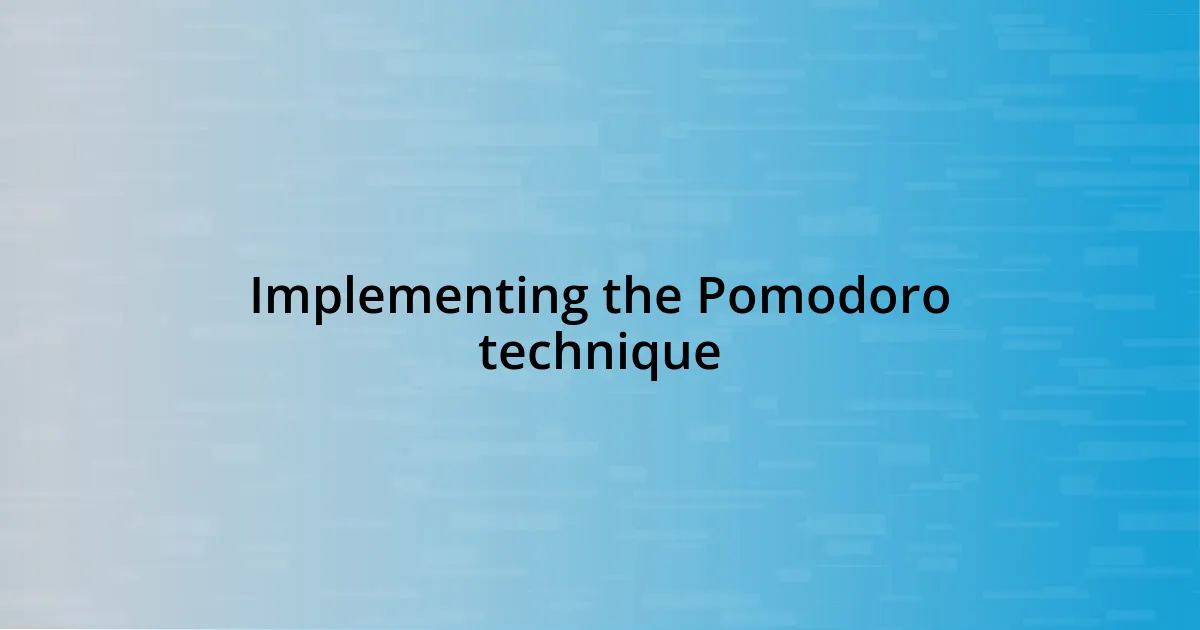
Implementing the Pomodoro technique
Implementing the Pomodoro technique transformed how I approach my work. Initially, I was skeptical about this time management method, thinking it might interrupt my flow. However, when I tried working in 25-minute increments with 5-minute breaks in between, I experienced a burst of productivity that I hadn’t anticipated. It felt refreshing to step away momentarily, almost like stretching before a big game.
One particularly busy week, I had a mountain of tasks to tackle. By dedicating focused Pomodoro sessions to each task, I noticed I was less prone to distractions. For instance, while writing a detailed report, breaking my time into intervals allowed me to concentrate better and also kept my mind feeling energized. I vividly remember checking my progress at the end of each session, feeling a surge of satisfaction with each completed task. Have you ever felt that overwhelming rush when you realize how much you’ve accomplished in a focused burst?
The beauty of the Pomodoro technique is not just in managing time, but in fostering a mindful work practice. After a few sessions, the 5-minute breaks became mini-rewards. I often took those moments to stand up, stretch, or grab a glass of water, which made me more attuned to my body’s needs. It was during one of those breaks that I realized how often I had neglected my physical well-being in the name of productivity. This insight led me to regularly incorporate brief physical activities during my workdays, reinforcing the idea that time management is not just about tasks but also about maintaining a healthy balance. What little things do you do during a break that rejuvenate your mind?
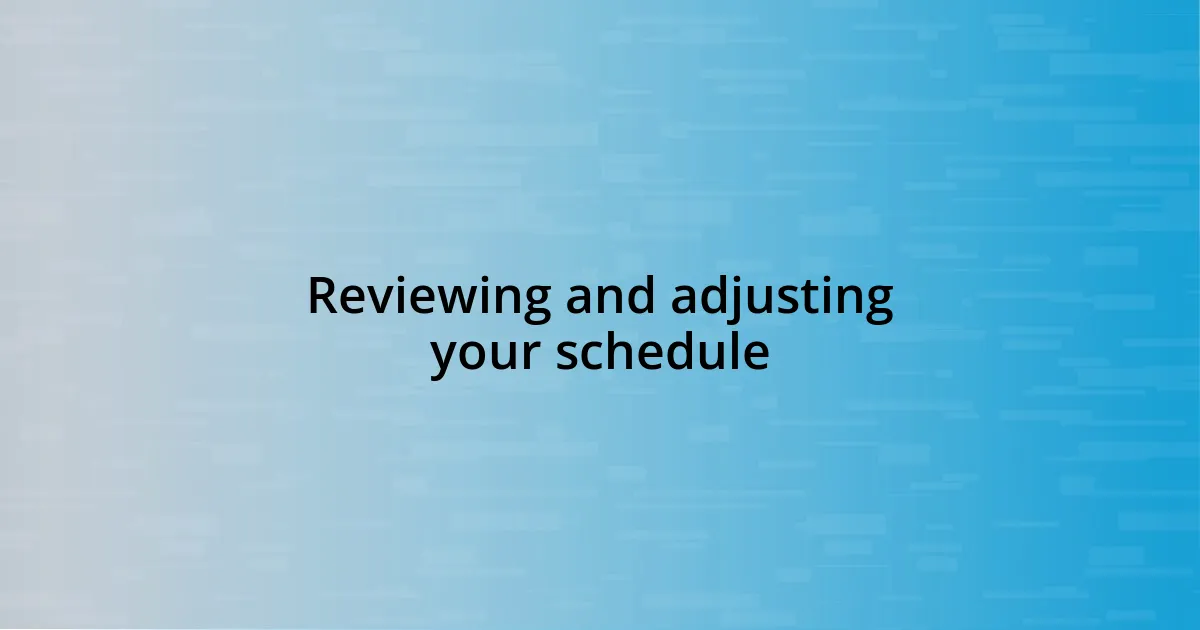
Reviewing and adjusting your schedule
As I reflect on my journey of effective time management, reviewing and adjusting my schedule has played a pivotal role. I remember a particular week where my initial plan crumbled unexpectedly. I took a moment to sit down with my calendar, reviewing what I had accomplished and identifying what still needed attention. It was enlightening to see which tasks I had overestimated or underestimated in time. Have you ever found yourself surprised by how a day unfolds compared to your original intentions?
Adjusting my schedule becomes almost intuitive after I assess my progress. For instance, I’ve learned that blocking out specific times for focused work can lead to better results, while also allowing me to shift priorities when life happens. There have been days where a scheduled conference call surprised me with complexity, leading me to realize I needed more time to prepare for my next meeting. In such instances, tweaking my schedule to allocate prep time not only alleviated stress but also ensured my performance remained top-notch. What adjustments have you found most effective when faced with time constraints?
In practice, I make it a habit to review my schedule weekly, looking for patterns and productivity peaks. Recently, I noticed that my creativity flourished during late mornings, leading me to adjust my most demanding tasks to that timeframe. This small tweak made a significant difference in my output. I ended up looking forward to those peak periods as moments of inspiration. What shifts in your routine could unlock new levels of efficiency or spark creativity?







